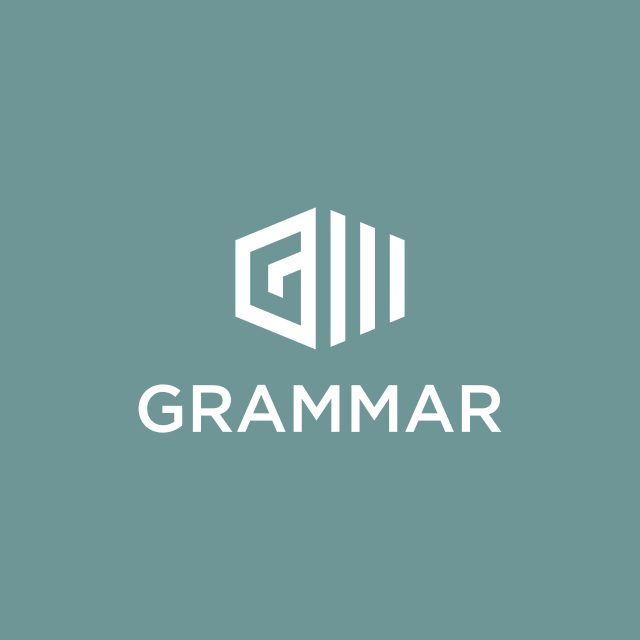Editorial »
Recently Added Articles Page #53
Our vibrant community of passionate editors is making sure we're up to date with the latest and greatest grammar tips, articles and tutorials.
A pronoun takes the place of a noun. When writing, you'll use a pronoun and that pronoun will refer to some noun close by. That noun (the referent) is called the antecedent. The prefix ante might make you think that all antecedents come before the pr... | added by edgood 8 years ago |
An appositive is a noun or noun phrase that defines or restates another noun (or pronoun). Generally, the appositive follows the word it defines, as in My friend, Susan, came to dinner. But the appositive can also precede the noun it defines. Study t... | added by edgood 8 years ago |
We have three articles in the English language: a, an, and the. The words a and an are indefinite articles, the word is a definite article.Use an when the word modified begins with a vowel or vowel sound, as in an apple or an hour.Use a when the word... | added by edgood 8 years ago |
When you conjugate a one-word verb, you can form the present tense (he decides) and the past tense (he decided) with just one verb word. But when you go beyond the present and past tenses, you need an auxiliary verb, also called a helping verb, to co... | added by edgood 8 years ago |
We have seven kinds of pronouns in the English language (personal pronouns, reflexive and intensive pronouns, relative pronouns, interrogative pronouns, demonstrative pronouns, indefinite pronouns, and reciprocal pronouns).The personal pronouns (and ... | added by edgood 8 years ago |
A clause is a group of words with a conjugated verb in it. Clauses come in two types: (1) independent and (2) dependent. An independent clause is a full sentence, begins with a capital letter, and ends with a period or other full stop. A dependent ... | added by edgood 8 years ago |
A collective noun, also called a group noun, refers to a group of persons or things. Examples include group, number, majority, team, and many others.In American English, when individual members of the group noun act individually, you should use a plu... | added by edgood 8 years ago |
Modifiers—adjectives and adverbs—attribute qualities to nouns and verbs. When the modifier shows a greater quality, it appears in the comparative state.Usually, for adjectives, you form the comparative state by adding “-er” to the adjective, ... | added by edgood 8 years ago |
A complement is a word or group of words that completes the action or state of being expressed by the verb. A subject complement typically follows the verb to be or a linking verb (seem, appear, many others).Thus, in the sentence you're now reading, ... | added by edgood 8 years ago |
A complement verb, or phrasal verb, comprises a verb and a preposition. We have hundreds of them in the English language: dredge up, drop out, make up, mess up, screw up, and the list goes on and on.The verb-preposition combination will then be trans... | added by edgood 8 years ago |
A complex sentence comprises one independent clause and at least one dependent clause. The dependent clause, which cannot stand by itself as a sentence, performs some grammatical function in the complex sentence. In the following example* of a comple... | added by edgood 8 years ago |
A compound adjective comprises two or more words. The unit formed then serves as an adjective. These are also called phrasal adjectives. The vast majority of writers have no clue about spelling these structures. As a general rule, you should hyphenat... | added by edgood 8 years ago |
A compound predicate is simply two or more main verbs attached to a single subject of the sentence. Please note: When you join just two verbs, no comma should come before the and. Only when you join three or more elements in a series do you use a com... | added by edgood 8 years ago |
A compound sentence comprises two or more independent clauses. You may join these clauses by using one of the seven coordinating conjunctions: but, or, yet, for, and, nor, so. Or you may use a correlative conjunction: not … but, not only … but (a... | added by edgood 8 years ago |
A compound verb is a multiword verb form consisting of one or more auxiliary verbs and a main verb, as in I have seen the movie, She has gone home, We will have decided this issue sometime next week.An unfortunate—and incorrect—rule has developed... | added by edgood 8 years ago |
The process of conjugation shows the forms of a verb as it appears in all tenses. Conjugation reveals tense (when), person (who), number (how many, singular or plural), and mood (showing the way the speaker regards the statement). The major tenses in... | added by edgood 8 years ago |
We have three kinds of conjunctions: (1) coordinating, (2) correlative, and (3) subordinating. The coordinating and correlative conjunctions join elements in a series. When you join elements (two or more nouns, two or more verbs, two or more adjec... | added by edgood 8 years ago |
A conjunctive adverb is a word like however or therefore. Others include nonetheless, consequently, even so, and others. We can use these words to join independent clauses. When you use them, however, make sure that you precede the word with a semico... | added by edgood 8 years ago |
The word consonant refers to the phonetic sound produced by occluding with or without releasing (p, b; t, d; k, g), diverting (m, n, ng), or obstructing (f, v; s, z, etc.) the flow of air from the lungs. From grade school, you remember the vowels as ... | added by edgood 8 years ago |
A contraction shows the coming together of two or more words with intervening sounds (in speech) omitted or with intervening letters (in writing) omitted. Typically, the contraction brings together an auxiliary verb and a main verb, as in He'll win (... | added by edgood 8 years ago |
Coordinate adjectives are two adjectives, of equal weight, modifying the same noun. Generally, you should separate the adjectives with a comma. A good test to use: Put the word and between the two adjectives and see if that makes sense. If so, the ad... | added by edgood 8 years ago |
A coordinating conjunction joins elements in a series. Each element must perform the same grammatical function and appear in the same grammatical form. This is the rule of parallel construction.We have seven coordinating conjunctions, which you can r... | added by edgood 8 years ago |
It's not what you think. Or hope.A copulative verb is a verb form that joins a subject to an adjective or to another noun. The verb to be is a copulative verb. So are the linking verbs (seem, appear, look, become, and others).The verb to be may join ... | added by edgood 8 years ago |
These conjunctions come in pairs. We have five of them:not … but not only … but also both … and neither … nor either … orAll good writers routinely use these conjunctions in their style. You should, too.When you do, make certain that the ... | added by edgood 8 years ago |
A dangling modifier is a phrase or clause that does not hook up to any other word or phrase in the sentence. The dangling modifier is a gross grammatical error, one you want to avoid.The error typically arises with adjectival phrases, especially thos... | added by edgood 8 years ago |







Discuss these recent grammar articles with the community:
Report Comment
We're doing our best to make sure our content is useful, accurate and safe.
If by any chance you spot an inappropriate comment while navigating through our website please use this form to let us know, and we'll take care of it shortly.
Attachment
You need to be logged in to favorite.
Log In